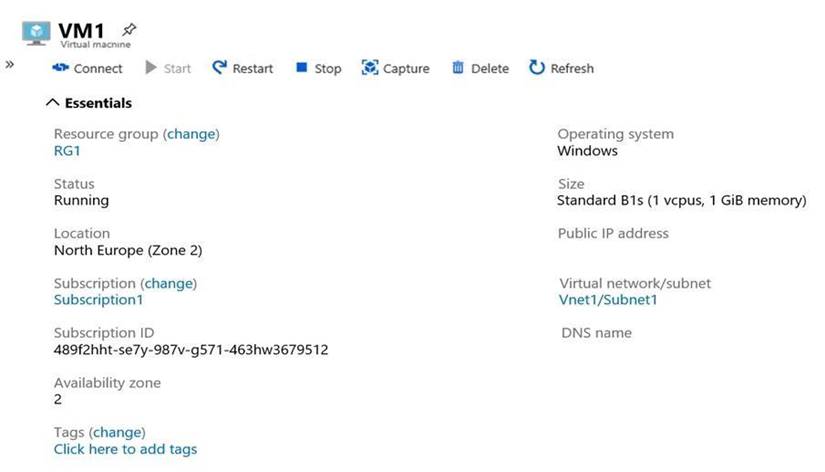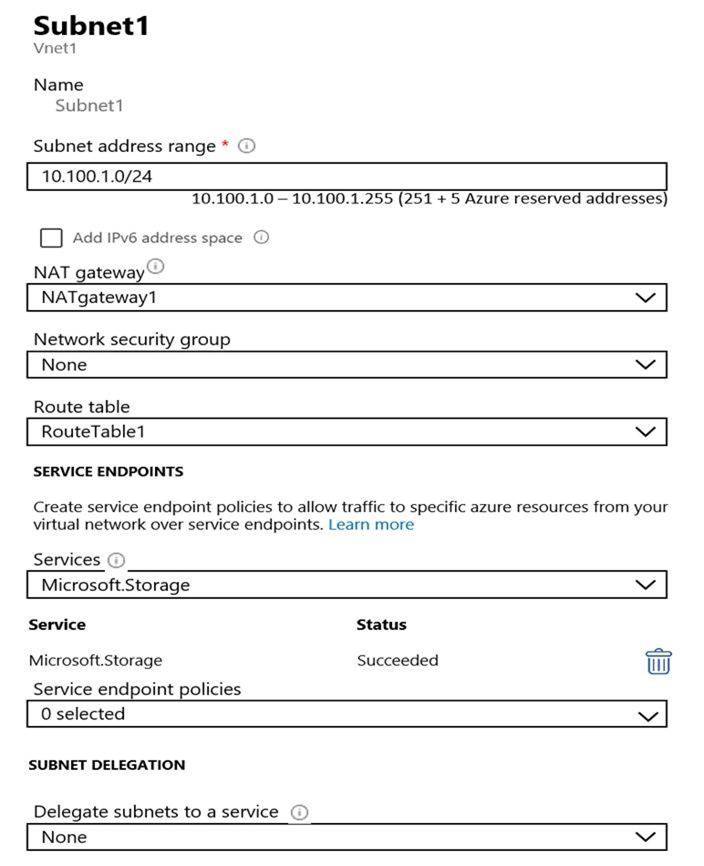DRAG DROP - (Topic 3)
Your on-premises network contains an Active Directory Domain Services {AD DS) domain named contoso.com that has an internal certification authority (CA).
You have an Azure subscription.
You deploy an Azure application gateway named AppGwy1 and perform the following actions:
• Configure an HTTP listener.
• Associate a routing rule with the listener.
You need to configure AppGwy1 to perform mutual authentication for requests from domain-joined computers to contoso.com.
Which four actions should you perform in sequence? To answer, move the appropriate actions from the list of actions to the answer area and arrange them in the correct order.
Solution:
Does this meet the goal?
Correct Answer:
A
- (Topic 2)
What should you implement to meet the virtual network requirements for the virtual machines that connect to Vnet4 and Vnet5?
Correct Answer:
B
There is no virtual network peering between VM4’s VNet (VNet3) and VM5’s VNet (VNet4). To enable the VMs to communicate over the Microsoft backbone network a VNet peering is required between VNet3 and VNet4.
- (Topic 3)
Your company has five offices. Each office has a firewall device and a local internet connection. The offices connect to a third-party SD-WAN.
You have an Azure subscription that contains a virtual network named Vnet1. Vnet1 contains a virtual network gateway named Gateway1. Each office connects to Gateway1 by using a Site-to-Site VPN connection.
You need to replace the third-party SD-WAN with an Azure Virtual WAN. What should you include in the solution?
Correct Answer:
B
- (Topic 3)
Note: This question is part of a series of questions that present the same scenario. Each question in the series contains a unique solution that might meet stated goals. Some question sets might have more than one correct solution, while others might not have a correct solution.
After you answer a question in this section, you will NOT be able to return to it. As a result, these questions will not appear in the review screen.
You have an Azure subscription that contains the following resources:
* A virtual network named Vnet1
* A subnet named Subnet1 in Vnet1
* A virtual machine named VM1 that connects to Subnet1
* Three storage accounts named storage1, storage2. and storage3
You need to ensure that VM1 can access storage1. VM1 must be prevented from accessing any other storage accounts.
Solution: You create a network security group (NSG). You configure a service tag for MicrosoftStorage and link the tag to Subnet1.
Does this meet the goal?
Correct Answer:
B
DRAG DROP - (Topic 3)
You have an Azure virtual network named Vnet1 that connects to an on-premises network.
You have an Azure Storage account named storageaccount1 that contains blob storage.
You need to configure a private endpoint for the blob storage. The solution must meet the following requirements:
✑ Ensure that all on-premises users can access storageaccount1 through the private endpoint.
✑ Prevent access to storageaccount1 from being interrupted.
Which four actions should you perform in sequence? To answer, move the appropriate actions from the list of actions to the answer area and arrange them in the correct order.
Solution:
* 168.63.129.16 is the IP address of Azure DNS which hosts Azure Private DNS zones. It is only accessible from within a VNet which is why we need to forward on-prem DNS requests to the VM running DNS in the VNet. The VM will then forward the request to Azure DNS for the IP of the storage account private endpoint.
Does this meet the goal?
Correct Answer:
A